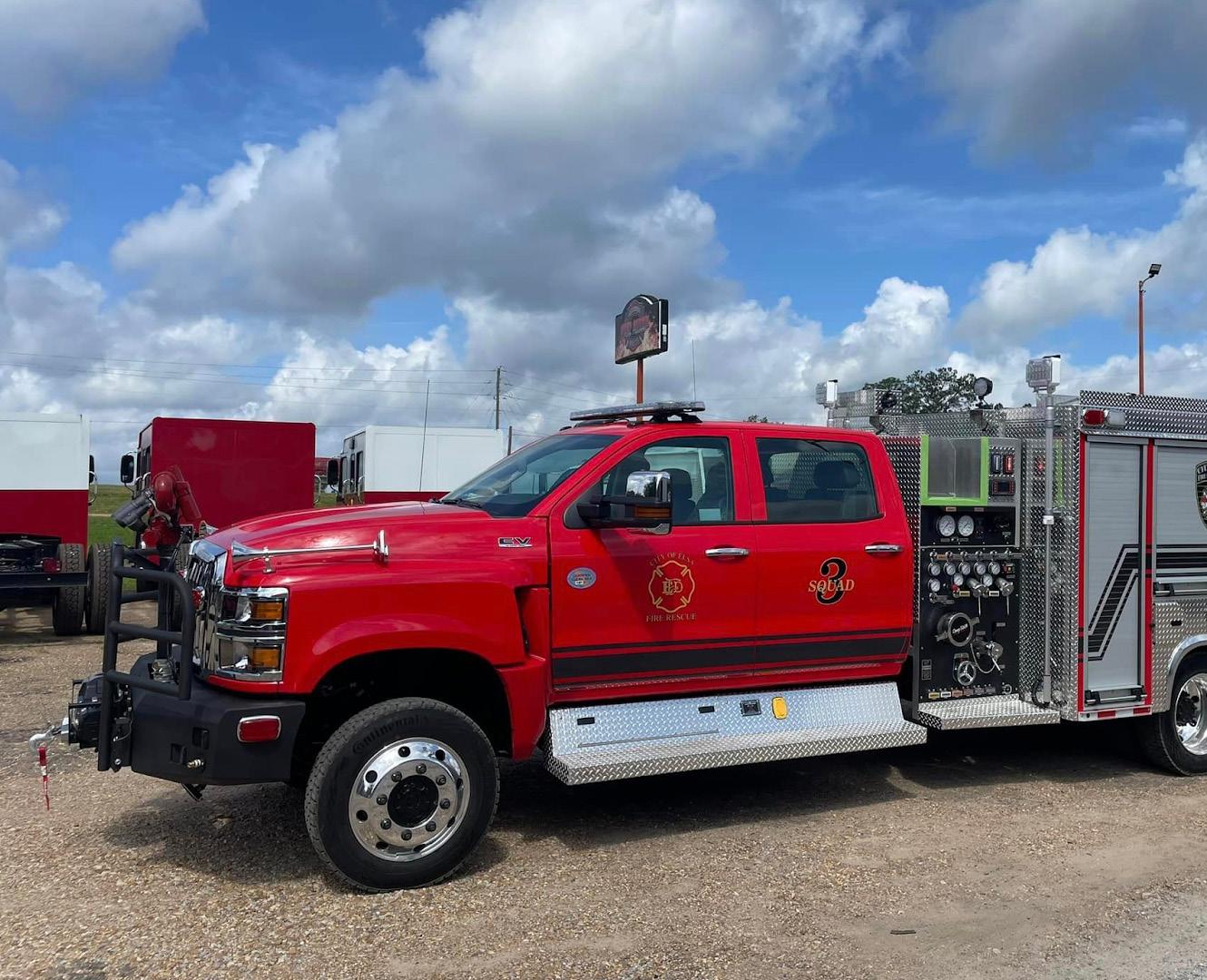






A local group is stepping up to help high school seniors gain valuable job experience before graduation. Workforce Solutions is offering two paid summer internships for high school seniors.
“These opportunities are crucial for young people to develop essential job skills early in life,” said Workforce Solutions spokesman Julio Salinas.
One of the programs, the Summer Earn and Learn (SEAL) program, is designed for high schoolers with disabilities aged 17 to 24. The other program offers summer work experience for low-income high school students starting at 16 years old. To qualify for this program, the student’s family must be receiving Temporary Assistance for Needy

Families (TANF).
Both internships pay $12 an hour and provide opportunities to work in diverse fields such as law, healthcare, plumbing, and HVAC repair.
More details about these internships can be found on the Workforce
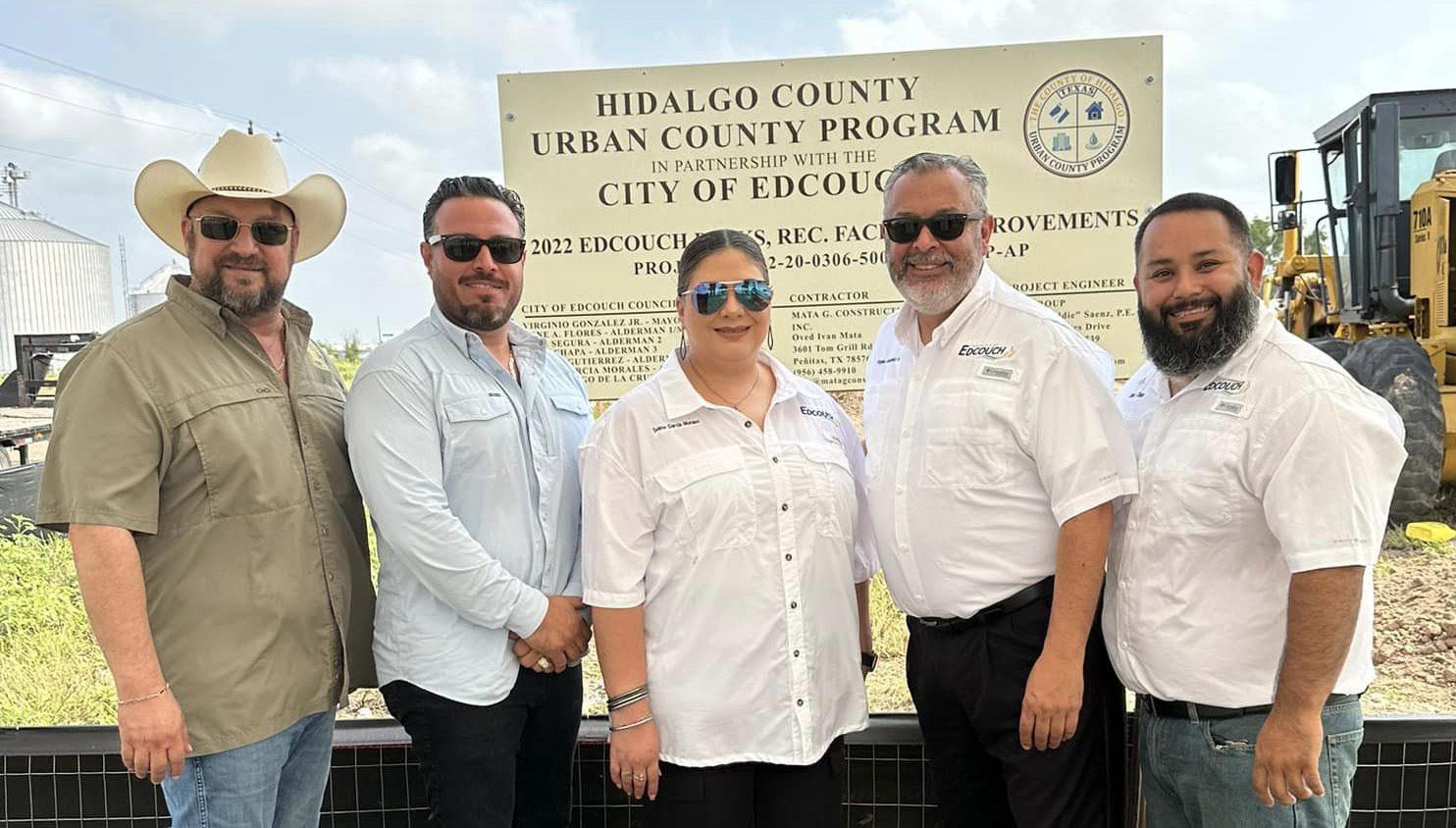
Edcouch, TX - The City of Edcouch celebrated a significant milestone on May 15 with the groundbreaking ceremony for the new Edcouch Parks and Recreational Facility, located at 424 Southern Avenue.
This project promises to transform what was once an empty lot into a vibrant recreational area for the entire community.
Solutions websites for Hidalgo, Starr, and Willacy counties, as well as the Cameron County Workforce Solutions website. For SEAL and TANF Youth inquiries, contact Roland Perez, Deputy Director of Business Solutions, at 956-661-2961.
Key dates:
- SEAL: The last date to accept VR referrals is June 19th.
- TANF Youth: The program runs from May 1 to September 30. Note that funding is limited and available on a first-come, first-served basis.

What a Borderland Church Taught Me About Belonging
ISD’s 18 Plus
McALLEN — The archaeological dig at McAllen ISD’s vacant Bonham Elementary campus, led by UTRGV Assistant Anthropology professor Edward Gonzalez-Tennant got underway Tuesday with an unlikely possibility to find anything, but offers a treasure chest of experience for his students.
As previously reported by The Monitor, the archeological dig on the property owned by the district must undertake an archaeological compliance as part of the National Historic Preservation Act.
Aging gracefully is not just about looking good; it’s about feeling good and embracing life with joy. This journey to joyful aging involves adopting daily habits that add positivity and satisfaction to our golden years. Here are ten daily habits that people who become more joyful as they get older usually adopt.
1. Embrace Gratitude
Those who age joyfully focus on the positives in their lives. They cherish their blessings and find the silver lining in every cloud. Reflecting on gratitude daily can significantly impact overall happiness.
2. Regular Movement
Incorporating regular physical activity, like a 30-minute walk, benefits both physical health and mental well-being. It provides a sense of purpose and keeps one connected with the world.
3. Lifelong Learning
Continuously learning, whether through new hobbies, languages, or books, keeps the mind active and sharp. Lifelong learning

slows cognitive decline and enhances overall happiness.
4. Nurture Relationships
Investing time in family, friends, and community fosters companionship, emotional support, and a sense of belonging. Nurturing relationships is a rewarding investment for happiness.
5. Mindful Living
Practicing mindfulness by staying present and
savoring each moment improves mental well-being and reduces stress. It enhances the quality of life by finding joy in simple things.
6. Practice Kindness
Acts of kindness, no matter how small, significantly impact others and oneself. Kindness nurtures joy and is invaluable in creating a positive environment.
7. Embrace Change
Those who age with joy
The blessings God sends into your life are best enjoyed in service to Him.
2 Samuel 7:18-29
Scripture calls David a man after God’s own heart (1 Sam. 13:14). Despite some horrendous failures, he lived a life of greatness. Unlike many others who are raised to positions of power and prestige, David understood that his prominence was not for his own
gain but for God’s glory. He knew inherently what Jesus would later teach: “The greatest of you shall be your servant. Whoever exalts himself shall be humbled, and whoever humbles himself shall be exalted” (Matt. 23:11-12). In today’s passage, David
refers to himself as the Lord’s servant and promises that all blessings he receives will be used to honor God’s name. He is conscious of the fact that gifts are bestowed on him and his descendants so the Lord ultimately receives praise.
accept change as a natural part of life. Embracing change and staying open to new experiences fosters resilience and joy.
8.Make Time for Solitude
Valuing alone time for self-reflection and selfcare leads to improved mental health and inner peace. Solitude helps recharge and gain clarity.
9. Healthy Eating
Fueling the body with nutrient-dense foods sup-
ports physical and mental health. Healthy eating is about balance and nourishing choices.
10. Cultivate Self-Love
Prioritizing self-love by treating oneself with kindness and embracing imperfections leads to profound satisfaction and joy.
Aging joyfully stems from intentional living. It’s about making decisions that nurture long-term well-being. Each day presents a fresh opportunity to embrace joy, regardless of age.
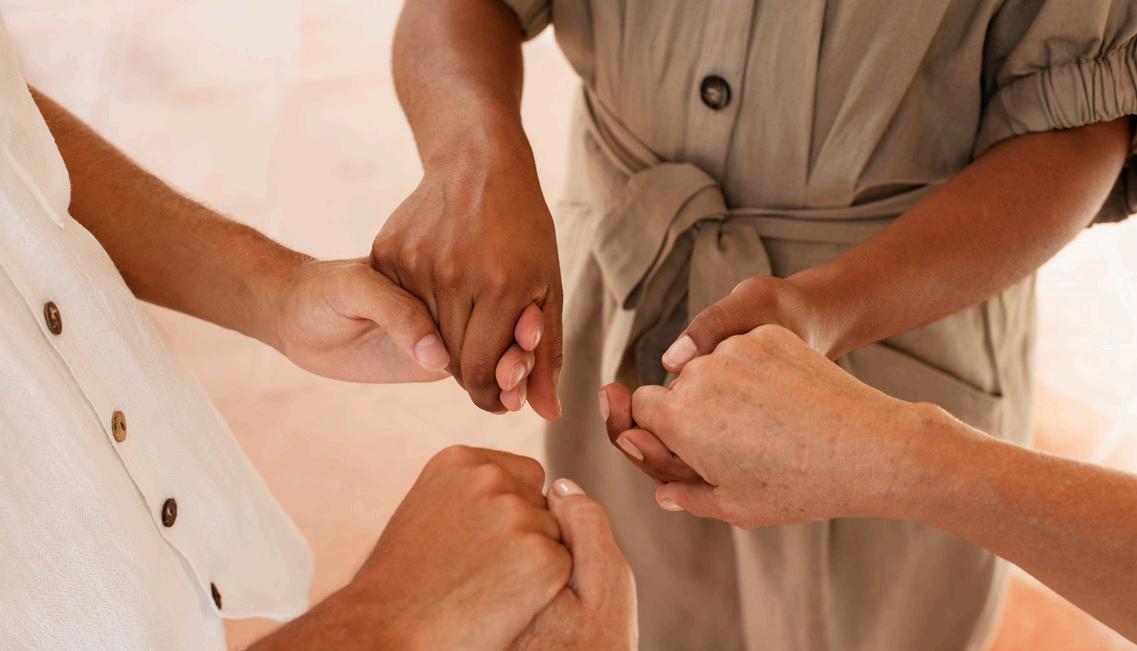
When we humble ourselves under the divine hand of blessing in this way, God’s glory is made plain to those around us. No matter how humble or high our position in life is by the world’s standards, we must always remember that every good thing
we have is from God and for Him (James 1:17).
When our heart maintains a posture of thanksgiving and service to our Father, we can become truly great for His sake.



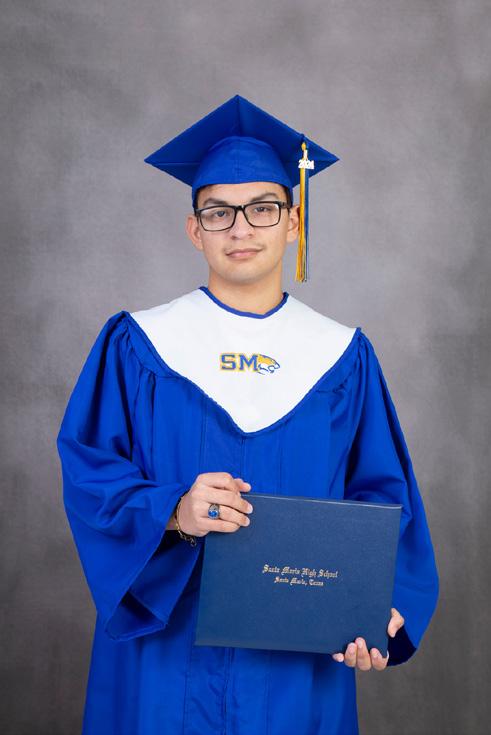



























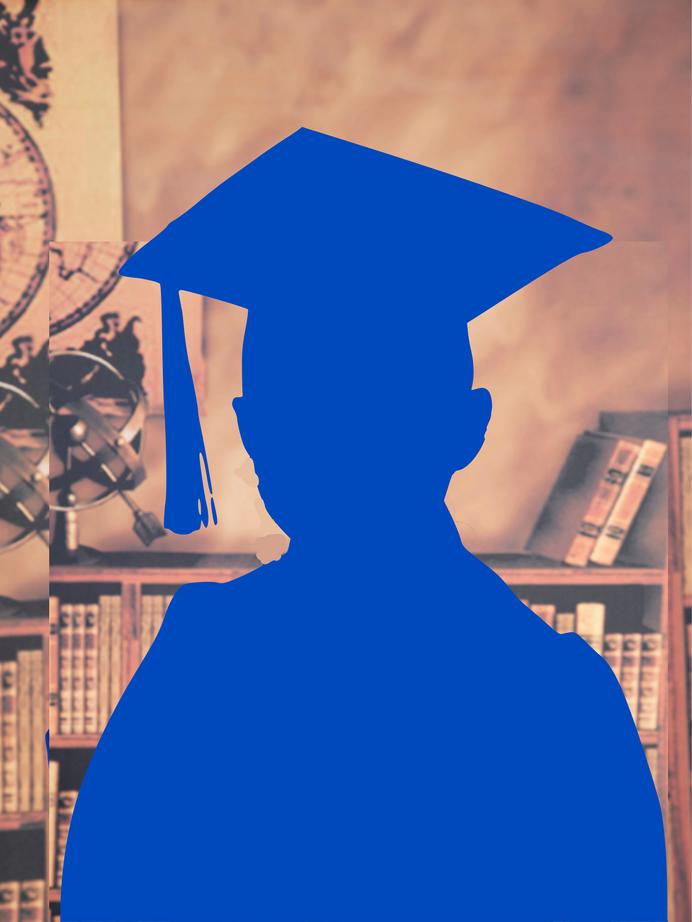

















Special thanks to Superintendent Martin Cuellar and the














Dear Community,
As we celebrate another year of growth and inspiration, I am filled with immense gratitude for your continuous support. The Community Press has always aimed to foster positivity and highlight the incredible individuals within our Rio Grande Valley.
Today, I want to emphasize the importance of believing in yourself. Self-belief is not just a personal mantra; it’s a transformative force that can shape your destiny. It empowers us to face challenges head-on, turn setbacks into comebacks, and push forward despite the odds. When we believe in ourselves, we unlock our true potential and open doors to opportunities we never thought possible.
Believing in yourself means having confidence in your abilities and trusting that you can achieve your goals. It’s about overcoming self-doubt and silencing the inner critic that holds you back. This inner strength allows us to persevere through difficult times and emerge stronger and more resilient.
Warm regards,


The district plans to sell the South McAllen property to the Boys & Girls Club of McAllen, but by federal law must conduct an archaeological dig given that the property might intersect a prehistoric/Indigenous burial ground.
Gonzalez-Tennant said the property is located close to a burial ground called the Ayala site, which was first discovered in 1948 during
construction of a sewer trench.
He said the site had several burials dating back within the last thousand years, with many of the burials having grave goods such as jewelry, seashells, coyote teeth, pendants and various other personal adornment items.
Gonzalez-Tennant said the Indigenous people
burying their dead with objects signify something about who they were in life, which is similar to the way people bury their loved ones today.
Hiring a backhoe operator from San Antonio company, Alamo1 with previous archaeological experience, with the most recent being in Brownsville, Gonzalez-Tennant and his group of graduate
and undergrad students began their regular procedures after the operator dug a 2-feet-by-12-feet-by6.5-feet trench.
Gonzalez-Tennant who is also the director of the Laboratory of Valley Archaeology said the location of the dig site was determined by analyzing aerial photographs as far back as 1955 to determine what part of the property has been relatively untouched and undisturbed.
“This is a pretty standard way of looking for archaeology, particularly in this area where you have a lot of eluvial deposits, right, like old floodplain deposits, because you’ve got
to get deep before you hit stuff,” he said.
To his surprise, there was a PVC pipe in the trench but the archaeologists worked around it. Students got right to work cleaning the wall, analyzing the layers of sediment and mapping out any stratigraphic changes.
The team of archaeologists get a bucket of dirt and put it through a screen in hopes to reveal something from the past.
“We’re on a terrace above a floodplain,” he said. “I was kind of expecting to see more river pebbles or cobbles but

-Love Mom


Successful people manage stress by believing they control their lives, unlike those who feel life happens to them. Research from the University of Florida shows that empowered individuals excel in sales, customer service, adaptability, and income. During tough times, they use anxiety to fuel passion and perseverance rather than despair. Emotional control under stress is key, with 90% of top performers excelling in this skill. Moderate anxiety boosts performance, but intense stress reduces brain areas for self-control, leading to chronic stress and health issues. To manage anxiety, one must develop the mental toughness and beliefs of empowered individuals. Here are five steps to achieve this:
Empowered individuals understand that change is inevitable. They believe they are capable of dealing with changes and making positive things happen. If you don’t naturally anticipate change, set aside regular time to list potential changes. This
practice opens your mind to change, improving your ability to spot and respond to it. Even if these changes don’t occur, anticipating them gives you a greater sense of control over your future.
Step 2: Focus on Your Freedoms, Not Your Limitations
The belief that “life isn’t fair” promotes despair and inaction. While we can’t always stop negative events, we can choose our response. For each potential change from Step 1, jot down positive actions you can take. This will highlight the control you have over seemingly uncontrollable circumstances.
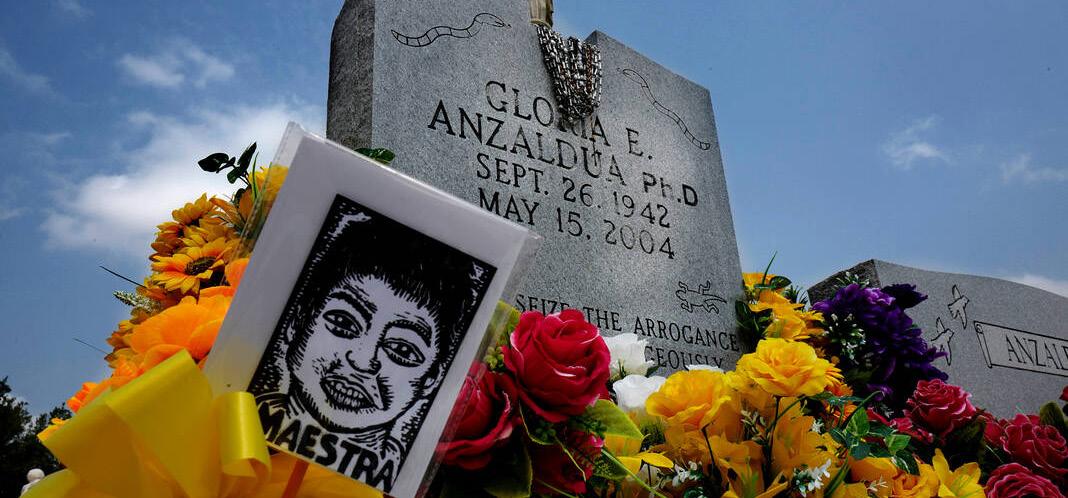
EDINBURG — In the 20 years after Gloria E. Anzaldúa died, her work has continued to influence people from all walks of life around the world.
Anzaldúa’s legacy and life was honored at El Retorno, an annual celebration attended by people near and far to share how Anzaldúa has impacted their lives and to highlight her significance.
Anzaldúa, born and raised in the Valley, was a queer Chicana poet, writer and feminist theorist. She was valedictorian of Edinburg High School in 1962 and graduated from legacy institution Pan American College in 1968.
Working as a teacher, she obtained a degree in English from the University of Texas at Austin. Anzaldúa is known for her contributions to the fields of feminism, Chicana and queer theory. She is best known for her 1987 semi-autobiographical work, “Borderlands/La Frontera: The New Mestiza,” which contains a mixture of prose, poetry and alternates between Spanish and English.
The book examines the Chicano/Latino experience through the lens of gender, identity, race and colonialism, and draws inspiration from her youth living in the Valley. The event included visiting Anzaldúa’s grave at the Valle de la Paz Cemetery in Hargill; a presentation and student panel at the UTRGV Ballroom; and a closing ceremony at a literary landmark at the Gloria E. Anzaldúa Plaza in front of the UTRGV Library, which was attended by Anzaldúa’s family.
Melissa Anzaldúa, the
oldest niece of Gloria, said it is more than honorable to know that she is still remembered after 20 years.
“She still touches so many people to this day and it feels like as the winds blow, her presence is here amongst the people because the job is not complete, by no means. It carries on through so many other lives,” Melissa said.
In the last chapter of “Borderlands/La Frontera: The New Mestiza,” Anzaldúa ends it with a message to Melissa titled “Don’t Give In, Chicanita
(para Missy Anzaldúa).” Melissa emotionally read the message at the closing ceremony, a full circle moment for her.
“It reminded me of being little when I would go to school with her when she was teaching and she was making her way through college,” Melissa said. “ Her impression of things was always you know, you can do anything you put your mind to it. Little did I know then when I was 6 years old, that she GLORIA Pg 12
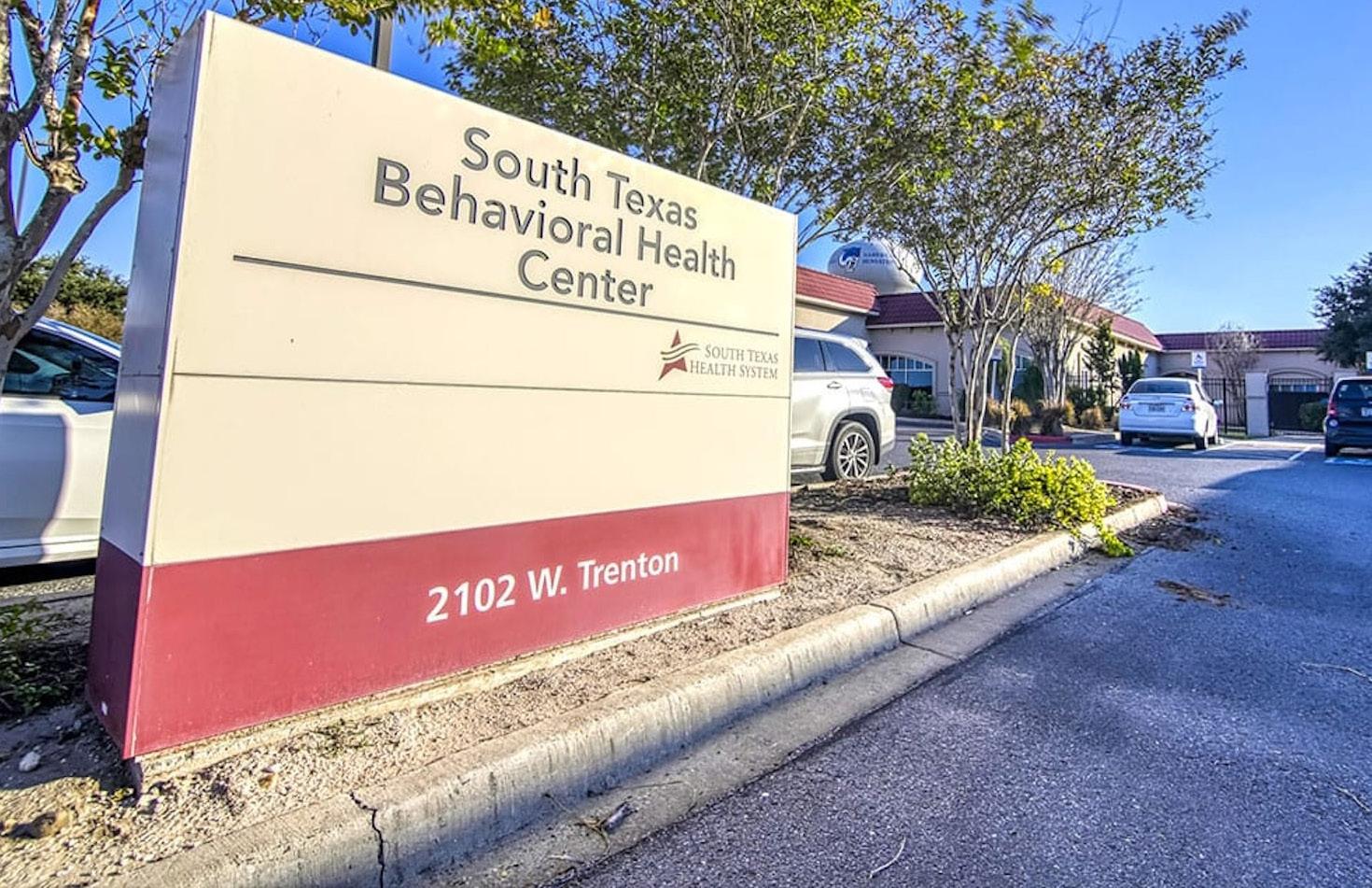
TOM CASTAÑEDA
South Texas Health System Behavioral is partnering with South Texas College to host a special panel discussion to address the current challenges surrounding mental health treatment.
Following the COVID-19 pandemic, which led to increased rates of anxiety, depression and substance use disorder in the United States and abroad, more Americans are prioritizing their mental health.
Spending on mental health services among Americans with private insurance rose by 53% since the start of the pandemic, according to a new study by the RAND Corporation and Castlight Health, with the use of mental health services increasing by 39%.
Currently, more than one in five U.S. adults live with a mental illness, per the CDC, with about one in 25 U.S. adults living with a serious mental illness like schizophrenia, bipolar disorder or major depression. Meanwhile, one in five children and adolescents has or will develop a mental illness in their lifetime.
While more people are seeking treatment, more than half of U.S. adults don’t receive treatment for mental illness, which can result in a poor quality of life, unnecessary disability, unemployment, substance use disorder, homelessness, inappropriate incarceration and suicide.
This Mental Health Awareness Month, South Texas Health System Behavioral is partnering with South Texas College to host a special panel
discussion to address the current challenges surrounding mental health treatment and what still can be done to ensure people struggling with mental health challenges get the help they need.
Entitled “CommUNITY: Shattering the Stigma Surrounding Mental Health as a Community Through Education, Communication & Support,” the event will feature the participation of experts from various sectors, including healthcare, education, private industry, law enforcement and the judicial system. They will discuss advancements in the Rio Grande Valley when it comes to providing mental health services for those struggling while helping community members understand what we can do as a community to ensure everyone, regardless of age, gets the education, support and access to mental health services they need.
It’s important to break the stigma surrounding mental health to ensure that individuals struggling get the help they need, especially as more people are seeking treatment for mental health issues post-pandemic. It’s a hot button issue that has become a global public health priority. To increase mental health literacy and combat the fear and misunderstand that often leads to prejudice against people with mental illness
The centerpiece of the new facility will be a state-ofthe-art basketball pavilion, featuring a covered metal structure. Alongside the basketball court, there will be a new bathroom facility to accommodate visitors. Additionally, the court will be equipped with bleachers and outdoor lights, making it a versatile space for both daytime and evening activities.
City of Edcouch Mayor Virginio Gonzalez highlighted the importance of this investment for the community. “We always knew that a new and improved basketball court for the community was going to happen. We understand that not only does this help our students or our kids from the community but also sister city and surrounding areas,” said Mayor Gonzalez. “Once we complete this, we’ll have a basketball court, almost state of the art. In the future, we can enclose it and make it into an indoor type of facility.”
The new recreational facility will be located behind the Edcouch Community Center, creating a centralized area for community activities and sports. The project has an estimated budget of around $440,000, funded through a partnership between the Hidalgo County Urban County Program and the City of Edcouch.
During the groundbreaking ceremony, city officials and community leaders gathered to mark the official start of the project. The event featured speeches from key figures, emphasizing the positive impact the new facility will have on the local community.
and addictions, it’s imperative that we unite as a community to provide education, communication and support to those experiencing mental health issues.
This panel discussion, taking place during Mental Health Awareness Month, will serve as a way to gauge where we stand when it comes to mental health services across various sectors in the Rio Grande Valley while assessing what still need to be done to ensure people get the help and support they need.
The free community event, which is open to the public, will include a community expo highlighting local mental health services and resources. Held in the Student Union (Building U) at South Texas College’s main campus, located at 3201 Pecan Blvd., McAllen, TX 78501, the event will take place from 10:00 a.m. to 12:00 p.m., on Thursday, May 21, 2024 with the panel discussion beginning promptly at 10:30 a.m.
Panelists include Nenci Garcia, LPC, Counseling Staff, Mission Consolidated Independent School District; Lupita Treviño, Regional Market Manager, CIGNA; and Kevin Trussell, MSN, RN, Director of Nursing, South Texas Health System Behavioral. I will moderate the panel.
For more information or questions about the facility, residents are encouraged to reach out to the City of Edcouch. This new development is set to provide enhanced recreational opportunities, fostering community engagement and promoting a healthy, active lifestyle for residents of all ages.
… we’ve either not gone deep enough or this just was never part of the old channel millions of years ago.”
Instructing his students and asking them questions about what they observe, one of them was Robert Paul Del Barrio, a graduate student whose thesis revolves around projectile points like the tip of arrows or spears.
“It’s super cool, because we get to experience some of our local history that a lot of people don’t necessarily know about,” Del Barrio said. “Maybe this site’s not producing materials, but it’s still cool to know that just a little bit north is the Ayala site. It’s pretty much in close proximity and it’s just really cool to be able to experience these types of historical moments.”
Bringing his expertise on projectile points he said hopes to find something but it is important to him to let people know that there are historical artifacts in the Valley and that people don’t have to leave in search of things like this.
With Gonzalez-Tennant offering a summer course for students to get hands-on experience near Laguna Heights this summer, Del Barrio said this is good insight to what they can expect soon.
“We only got to do one hole here, but out there, we’re gonna have a few more holes,” he said. “So having a little bit of knowledge, how this actually plays out, what to expect, the safety measures and all that stuff plays a big role in what’s to come in the summer.”
Gonzalez-Tennant has said it is unlikely to find anything and when asked if he felt the same way during the dig itself, he replied, “It produced almost nothing. In Texas, the official way to classify a site or record one is if you have five or more artifacts in an area. We don’t even have that. We have a bolt, which probably has fallen here, one tiny piece of lithic, just a tiny flake that came off of a stone tool. No way to date that.”
The next step in the archaeological process will be to take whatever is found and analyze it and write a formal report to the Texas Historical Commission.
Edinburg Parks and Recreation hosted its first Junior Olympic boxing tournament, featuring 478 registered boxers and over 300 coaches and officials. Participants from the Rio Grande Valley, Austin, San Antonio, and other Texas regions competed, marking the largest regional tournament in South Texas Amateur Boxing Association history. Winners aged 13-16 will advance to the Junior Olympic Nationals in Wichita, Kansas, from June 22-29. Edinburg officials, including Javier Garcia, Eric Molina, and Martin Martinez, planned the event with the Edinburg Chamber of Commerce aiming to host a national tournament in the future.

In South Texas’ Hidalgo County, about half a mile due north of the Rio Grande, there’s a oneroom United Methodist Church next to an old family cemetery. The church is white with wooden board and batten siding and a small red steeple. It’s a quintessential country church if there ever was one.
The chapel was built in 1884 by Martin Jackson, son of Nathaniel Jackson and Matilda Hicks, an interracial couple who fled discrimination in Alabama in the 1850s and whose ranch land (on which the church now stands) was a refuge for runaway enslaved people from the deep south.
Arriving from all over the country, four of my colleagues and I had flown into Hidalgo County to visit rural organizing partners in several small towns of the Rio Grande Valley, the southern point of Texas that makes up the floodplain of the Rio Grande.
We passed border
patrol officers and surveillance balloons on our way to the Jackson Family Ranch, where Nathaniel Jackson descendent and keeper of the property, Ramiro Ramirez, invited us to spend the afternoon. Ramiro parked his truck in the dirt driveway in front of the church, opened the chain-link fence, and welcomed us onto his family’s property.
If you face the front of the church and squint your eyes, you’ll see what looks like rust-colored toothpicks sticking up out of the dusty Texas soil. We crossed the border wall through a gate to get to the Jackson family property. The gate stays open all the time because the Rio Grande, which forms the border between the United States and Mexico, is actually half a mile to the south. It was never more apparent to me that the wall serves more of an imaginary function than a physical one than when we drove straight through that wide-open gate. If the wall is necessary to keep

Some of us feel torn between two seemingly conflicting parts of ourselves.
dangerous criminals out of the United States, as some politicians would have you believe, then why are there portions of it indiscriminately open to anyone who might pass by, half a mile away from the official border?
Homes and farms are scattered around that halfmile-wide strip of land in between the border wall and the actual border, and it’s land that belongs to American citizens.
Although I can’t speak for the residents, it would come as no surprise to me if the people living in between the border and the border wall felt like they existed in between two different worlds. That theme of in-betweenness is something that kept coming up throughout our visit.
On our first day, we spent the morning with employees of the South Texas Museum of History conducting a story circle, an exercise in which individuals sitting in a circle take turns telling personal tales based on a prompt. Ben Fink, my colleague who facilitated the story circle, started with the prompt, “share a moment that complicates where
you come from.”
Two Mexican-American participants shared that they experienced anxiety over feeling neither Mexican nor American enough to fit neatly into one of the categories.
The feeling of being pulled between two conflicting labels is one that I can empathize with. I dedicated my life to Christ at a youth retreat when I was fourteen years old and I took my faith very seriously throughout my teens and early twenties.
But when I came out of the closet as a lesbian in my mid-twenties, I felt too gay for church and too out of the loop to be at home in a gay bar.
It would be easy for me to rattle off the ways bad theology hurt me (and people close to me know I like to fume about it). But the truth is more complex than that. When I think back on my time in the church, what comes to mind first aren’t the sermons that made me sweat through my Sunday best.
I think about the earthy smell of the wooden pews and the cookies I stole out of the parish hall in the first church my family attended. I think of crawdad
boils and the soft yellow paper in my grandmother’s prayer book. I hum in my head the opening verse of my favorite hymn, “All Creatures of Our God and King.”
Stale pizza, laughter, the soft pink of sunset when I walked out of youth group on Sunday night, those things often come to mind before sermons about sin and death and the gnashing of teeth.
Even though I look back with fond memories, practicing my faith in the way I used to doesn’t feel tenable for me anymore. As a gay woman, I feel like I’m not allowed to love hymns, scripture, or liturgy. But as a Christian, I feel like I’m not allowed to love my girlfriend.
Ramiro stepped out of the chapel to get something from his truck. And when he came back in, he handed a red hymnal to two of my colleagues, who I’ll refer to as friends here, since that feels more accurate. Both of them are vocalists and hymn fans (one of them is even a self-avowed historical hymnal nerd). Without missing a literal beat, my friends opened the book and sang, in harmony, “There is a Fountain Filled with Blood.”
They didn’t realize it at the time, but their singing gave me a kind of permission I didn’t know I needed. My friends have their own complex personal relationships with religious communities, but listening to them sing with their whole hearts, despite their backgrounds, reminded me that it was okay to embrace things I felt like I wasn’t allowed to. And I like to think it couldn’t have happened anywhere else but that tiny borderland church, the perfect embodiment of uncomfortable in-betweenness.
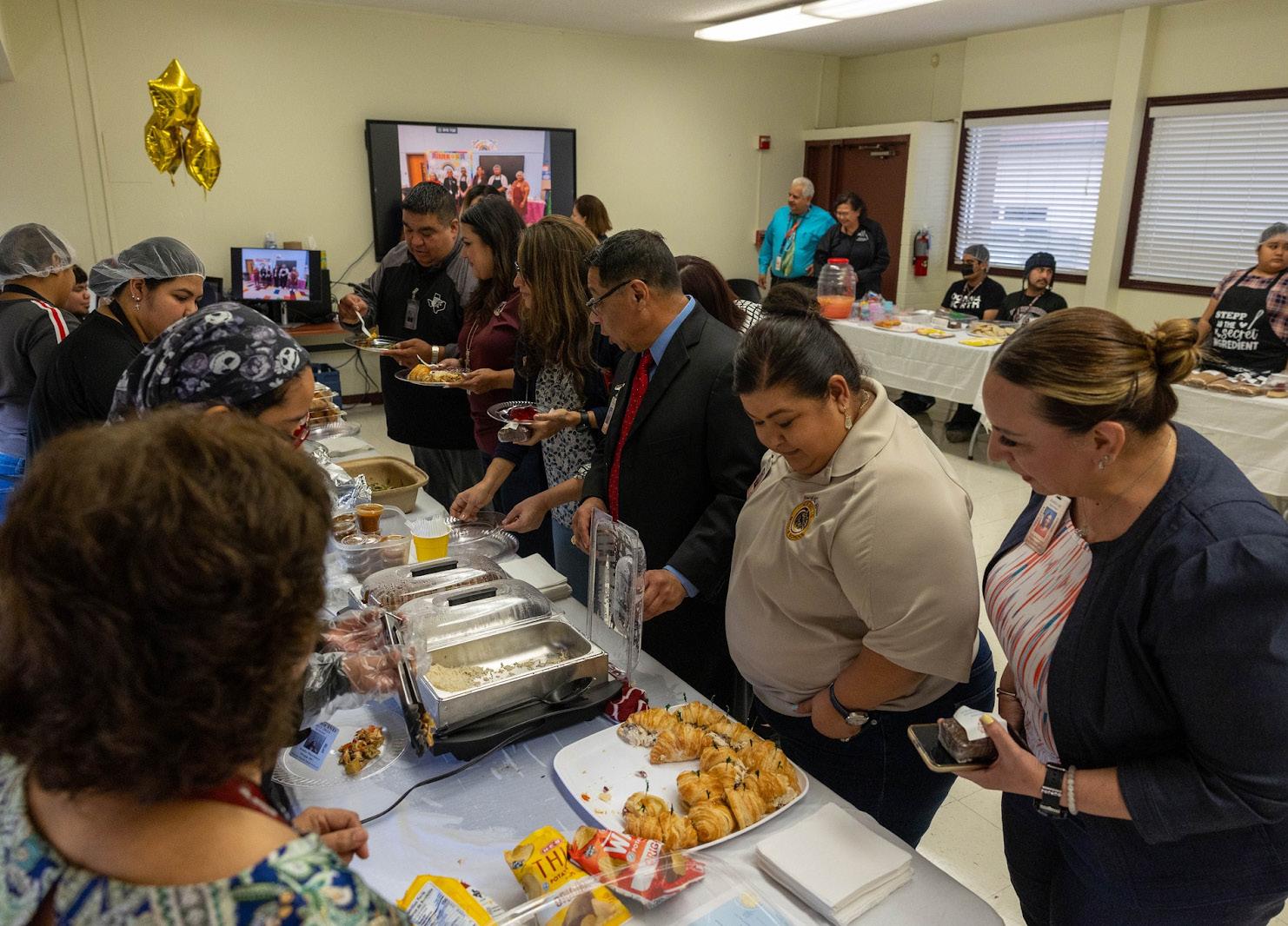
On May 15, 2024, students in Donna ISD’s innovative 18 Plus program showcased their talents and entrepreneurial spirit at a special event. Principals and directors were invited to check out a variety of student-made products, ranging from delicious baked goods and
artistic crafts to personalized coffee mugs, t-shirts, and tote bags.
The 18 Plus program, launched by the Donna Independent School District’s Special Education Department, is designed to help students who have completed their academic instruction gain indepen-
dence and transition into adulthood. Special Education Director Sylvia Cardenas explained that the program, based at the Runn campus on 281 Military Highway, serves special needs students aged 18 to 21 who have finished their credit, curriculum, and state assessment require-
Step 3: Rewrite Your Script
Changing your ingrained thought patterns is challenging but necessary for empowerment. Reflect on a recent tough time and identify the beliefs that hindered your response. Write down this “hard-luck” script. Then, create an “empowered” script you wish you had followed. Regularly comparing your current thoughts with these scripts helps adjust your thinking to be more empowered.
Step 4: Spot and Stop Negative Self-Talk
Negative self-talk fuels anxiety. When you catch yourself thinking negatively, write down these thoughts. This helps slow down their momentum and lets you evaluate their truthfulness. Often, negative thoughts are just that—thoughts, not facts. Challenge these thoughts by seeking an external perspective to see if they hold up.
Step 5: Count Your Blessings
ments. “These students have already completed their academic instruction but are continuing with us through the age of 21,” Cardenas said. “The purpose of this program is for the students to use the skills they learned in school to help them transition into adulthood and become productive members of society.”
The program focuses on three core areas this year. First, students use Cricut stationery to design t-shirts, aprons, cups, mugs, and caps. These items are then sold in a coffee shop bistro setting that the program has established. “They will be using the skills they learned to make these items,” Cardenas said. “They will in turn sell the items they designed.”
Additionally, students have the opportunity to run a thrift store, gaining firsthand experience in retail. “We have already received donations that will help us jump-start our new thrift store,” Cardenas said. “The students will experience what it’s like to work in a store.”
Moreover, the students will learn hospitality skills by acting as hosts and catering to guests during workshops, in-service sessions, and staff meetings held in a designated room. “The students will serve the individuals by using the knowledge they gained in the coffee shop bistro,” Cardenas noted. “They’ve already started and they’re getting really excited.”
The event provided a strategic opportunity for students to demonstrate their entrepreneurial skills and potentially secure
orders for the upcoming school year. Principals and directors could envision how these student-made items could be perfect for various school events, fostering a sense of school pride while supporting the program.
Attendees were impressed by the variety and quality of the products. The delicious baked goods were a hit, with many commenting on their professional presentation and taste. The artistic crafts displayed creativity and skill, while the personalized items like coffee mugs, t-shirts, and tote bags showcased the students’ ability to create marketable products.
Looking ahead, Donna ISD plans to expand the program to include horticulture, partnering with the Santa Ana National Wildlife Refuge to start a garden where students will plant and create flower arrangements and other items to sell.
“The plan is to make the 18 Plus program a full-fledged initiative,” Cardenas said. “It’s going to be really beneficial to the students, but what’s really exciting is watching them use the skills they’ve learned and transition into adulthood. Seeing them in action is wonderful and brings me a lot of joy.” The showcase was truly a win-win situation, providing a platform for students to shine and opening doors for future opportunities. As the program continues to grow, it promises to offer even more valuable experiences, preparing students for success beyond their school years.
Gratitude reduces the stress hormone cortisol by 23%, according to research from the University of California-Davis. Cultivating gratitude daily can improve mood, energy, and reduce anxiety. By regularly contemplating what you’re grateful for, you can lessen anxiety and enhance your sense of control.
Overwhelming anxiety and empowerment are mutually exclusive. Whenever stress or anxiety limits your performance, following these five steps can help you empower yourself and regain control.
was going to go on to do such great things. Her pursuing my interest in writing and poems was actually something that she was doing as a lifelong journey.”
One of main organizers behind the events, which started in 2008, is Emmy Pérez, a professor and the chair of the UTRGV Creative Writing Department.
Initially started as a one-time event, Pérez said it has been growing ever since due to people wanting to celebrate Anzaldúa’s legacy.
“I see some of the students in my classes, something clicks when they come to the events and they see how other people really love Anzaldúa’s work,” she said. “So they become more interested, so it’s really motivating to me. It doesn’t feel repetitive, we get different speakers all the time and then we just get the energy from the people who are coming that want to keep doing it. And her family has come for years and they always seem genuinely grateful.”
Another main organizer of the event was Alejandra Ramirez, an assistant professor in the UTRGV Department of Writing and Language Studies.
Loving Anzaldúa’s work since she was an undergraduate student and being the reason why she accepted a job at UTRGV, Ramirez said wanted to be part of the events honoring Anzaldúa since she got to the university.
“It was beautiful,” she said. “From the beginning being at the cemetery … you’re having such a spiritual experience with others that were equally invested in her work and it was very moving. And then being here on campus, her alma mater, I think was just as moving … it just made me feel like, somehow we were in that space, or she’s in that space with us.”
Starting the event at Anzaldúa’s grave, people came from places such as Corpus Christi, San Antonio, Florida and Mexico City to attend. Walking side by side to her grave, people sang “Arriba mi gente” by Anzaldúa with people sharing who they are and why Anzaldúa and her work meant so much to them.
Yael Valencia Aldana, a Caribbean Afro-Latinx writer and poet, traveled all the way from Miami to attend the event. Aldana said she first encountered Anzaldúa’s work as a graduate student studying women, gender and sexuality studies at Florida Atlantic University.
Inspired by her work, specifically on identity, Aldana plans to publish a poetry book next year called “Black Mestiza.”
“When I read (Anzaldúa’s work), it was sort of all parts coming together as one,” she said. “The good, the bad, ugly everything in one person. So I felt like I had an anchor in this world and I had the right to speak my point of view without apologizing.”
Yolanda Godsey, a retired Texas A&M Corpus Christi professor, drove down with her grandson Samuel Godsey, a mechanical engineering student at TAMCC, to show him the importance of Anzaldúa and her work.
“It was very rewarding,” Yolanda Godsey said. “I love to see the participation of young people and when we were experiencing the dance … the way that they were uttering the elements. All of that comes to life when you read her readings.”
With a performance by the UTRGV dance team at the cemetery and the closing ceremony led by assistant professor Rebeca Gamborino, she said her students dissected Anzaldúa’s poem, “Now let us shift” and interpreted the work into a dance.
“We highlighted words and phrases that stood out to us and what they meant to us in our bodies,” Gamborino said. “From there, we just started piecing the piece together, adding gestures that represented certain words, certain facings that we did. We just really wanted to honor her words and she writes so much about being in the body and it’s so descriptive and lively, that it’s easy to just set movement to it.”
Alma López, a Mexican-born queer Chicana visual artist based in Los Angeles was the event’s keynote speaker and spoke about Anzaldúa’s impact.
Surprised but honored to be invited to the event, her presentation focused on reflecting on her experiences with Anzaldúa’s work and even meeting her a handful of times.
“My connection to Anzaldúa is the creation of these images and basically the creation of a visual language,” López said. “Because I think as artists, we communicate in images and a lot of those images are very coded images.”
On May 24, the City of Elsa proudly announced the arrival of its new mini pumper, Squad 3. Despite its compact size, Squad 3 boasts an impressive capability of pumping 1,500 gallons per minute. Equipped and ready, Squad 3 will serve and protect the citizens of Elsa, ensuring the community’s safety and well-being.
Squad 3 will officially be on duty starting next week, enhancing the firefighting capabilities of the city. The City of Elsa extends its deepest gratitude to the City of Elsa Texas commissioners for their unwavering support and commitment to prioritizing the needs of the citizens.
The Elsa Volunteer Fire Department gives special thanks to Gilbert Villarreal, Fire Trucks of Texas, and DeepSouth FireTrucks for their dedication and hard work in making this valuable addition to the fleet possible.
